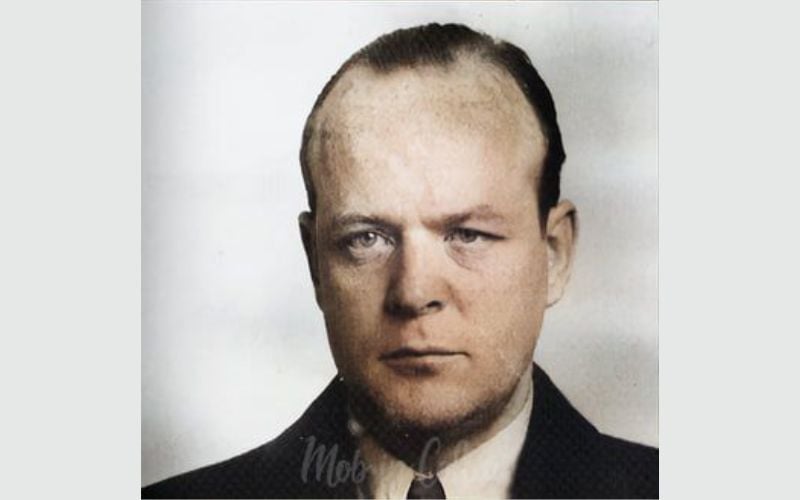"I'm a bit of a sneaker-head. Probably comes from growing up in Brooklyn," Patrick Mangan told me in an interview recently from the road. The Riverdance fiddler is scheduled to be back in town for St.Patrick's Day when the tour hits Radio City Music Hall from March 17-21. The whole Riverdance extravaganza ends its long road trip--and world-wide phenomenon--for good, after 15 years influencing the status of Irish traditional music so that it is now a fundamental genre in world music. When the tour's done, Mangan's returning to New York City for good, after months and months on the road--wearing out those sneakers.
"Twelve pairs of sneakers might seem a bit excessive," he told me, "but keep in mind it is an eight-month tour, so you kind of have to pack up your life into two big suitcases. They would be way overweight if I had to get on a plane but luckily the company travels with a luggage truck, so even when we fly, our bags travel by ground which is very handy. I usually acquire a few pairs on the road, too. Whenever I see something unique, especially in a city I might never return to, I feel compelled to pick a new pair." You can take the boy out of Brooklyn, but not Brooklyn out of the boy.
"I've been touring full-time since summer of 2006 (usually with a few months off in between each tour)." he told me. "In that time I've been all across the States, and traveled to Canada, Mexico, Ireland, France, Germany, Switzerland, Japan, and China."
Managan started playing fiddle at the age of 5. His first exposure to violin came through Suzuki, a classical system for learning, developed in Japan, but his parents were lovers of the traditional Irish music of their family's heritage and exposed him to The Music (as people in it, call it) from the crib. He was a regular at the New York Irish festivals like the famous one at Snug Harbor where people like Andy McGann and Paddy Reynolds were regulars. At age 8, Mangan's mother met Brian Conway at one such feis, and lessons soon followed. You can read a profile of Brian Conway's decade-long Wednesday night performance-seisiún here. Mangan's been hooked ever since.
"I always had this music in my head," Mangan told me. "I was fortunate enough to play with legends like McGann and Reynolds on many occasions as a kid. Andy, Brian and myself even did a few gigs together and recorded on Brian's album, representing three generations of New York-Sligo fiddle playing. I was very lucky to be growing up at a time when these greats were still alive and playing beautiful music."
Mangan defines his music by these influence, calling it "the New York-Sligo style," in recognition of the earliest Irish trad recordings, which were made on the same labels as the earliest jazz records. Many of the fiddlers in exile in New York during the Golden Age of Irish trad recordings (1920s-30s) came from an area of Sligo associated with Michael Coleman, who is a God in the music, and whose recordings made a major impact on Irish traditional music players everywhere.
From there, as a true New Yorker, Mangan's been exposed to all sorts of music. "I like to improvise in different styles from folk to jazz to rock to house."
He's also a DJ. "I got very into that in college. While I'm on the road with Riverdance, I sometimes DJ cast parties and have even experimented with playing electric violin on top of a DJ mix," he told me.
Riverdance is known for its spectacle, an Irish traditional music base, and a world music hodge-podge, that suits a fiddler with Mangan's unique background. He's rooted in the traditional music of his family and the Irish New York community, while maintaining a wide variety of interests. The show is kind of like Vaudeville of yore, revamped for a global audience in search of a unique show. Like Vaudeville, the Irish were in the middle of this unique kind of popular entertainment that takes traditional forms and gives them the spectacle that thrills massive audiences. Riverdance had a big part to play in opening up new markets to traditional players by exposing the music to more people than ever before. Commodification has its draw backs, of course, and a backlash has brought many back to the roots of the music.
"I played my first Riverdance show on Broadway in 2001, when I was 16, becoming the youngest and first male fiddle player in its history." He did Riverdance off and on while in high school and college. When he graduated college, his timing couldn't haven't been better. A full-time position opened up in the American touring company, and he's been doing Riverdance ever since.
A long strange trip is coming to an end. Catch the historic final New York performance for a Saint Patrick's Day you won't forget. You can get tickets, here. And check out Mangan's website, here.




Comments